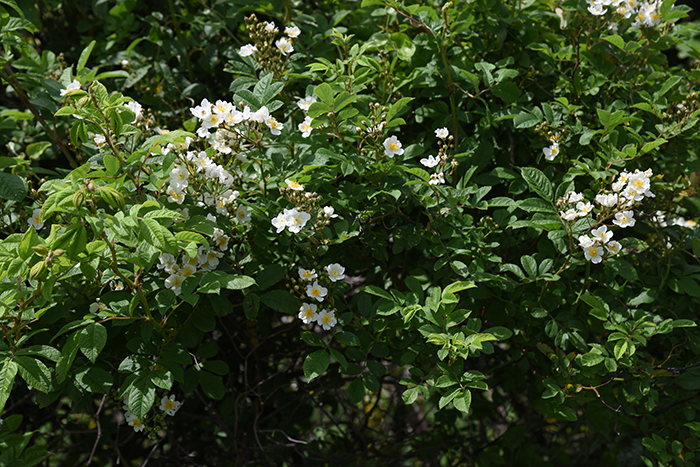
Not all weeds look — or smell — like they will wreak havoc on a pasture. Take multiflora rose, for instance. Despite its sweet smell and summertime blooms, it is one invasive plant that can be a real thorn in a farmer’s side.
Multiflora rose was introduced to the United States from Asia in the 1800s as an ornamental plant. Christine Gelley with Ohio State University Extension explains that it was originally used as a root stock for roses and was later promoted as a living fence for erosion control in the 1900s. Considering its aggressive growth pattern and prolific seed production, though, it eventually earned a spot on the invasive species list in the Buckeye State, as well as many others.
Gelley notes multiflora rose is not poisonous to livestock and does have some merits, like wildlife habitat and a pleasant scent. Even so, it can be difficult to control because it spreads via stolons and can sprout from discarded root tissue in the soil. A well-established multiflora rose plant can produce up to 500,000 seeds that are dispersed by wildlife and can lie dormant in the soil for up to 20 years and still be viable.
“No one should be propagating these plants on purpose or ignoring them in the landscape,” the agriculture and natural resources educator asserts.
Opt for chemical control
Mowing multiflora rose will likely not be successful, and digging up its roots can be extremely labor intensive. Therefore, foliar herbicide applications are the best option to remove plants, especially when multiflora rose is small and in bloom. Gelley recommends fully coating plant leaves for the most effective weed control; however, she encourages farmers to avoid spraying flowers as much as possible.
“It is best to avoid spraying herbicides directly on blooms that attract pollinators, so proceed with caution when selecting an herbicide and spray time,” she says. “Pollinators tend to forage very little in the hour before sunset and the two hours prior to sunrise, so evening time would be ideal for the foliar herbicide application if the plants are in bloom.”
Herbicide applications can also be made prior to bloom or after rose petals have dropped. Use products that contain metsulfuron methyl, dicamba, 2,4-D, triclopyr, and/or glyphosate, depending on the surrounding forage species, time of year, application method, and label restrictions. These may include withdrawal times for lactating or market animals or hay harvest restrictions.
Gelley adds that multiflora rose can be managed in the offseason with basal bark or cut stump treatments. Although these methods have shown to be more effective at eliminating larger plants, they can be more labor intensive than foliar herbicide applications. Small ruminants can also be utilized to graze out multiflora rose. Goats and sheep have a specialized prehensile lip that allows them to select individual leaves from plants while avoiding thorns and woody tissue.
“Diligence and patience are key in gaining ground back from a multiflora rose infestation,” Gelley states. “My advice is to enjoy the blooms today but bid those plants goodbye in the coming weeks.”

